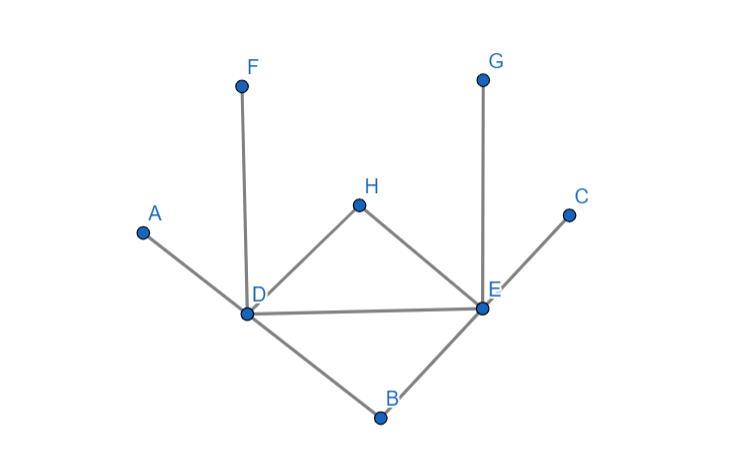Question
Question: What should be the angle between two plane mirrors, so that whatever be the angle of incident, the i...
What should be the angle between two plane mirrors, so that whatever be the angle of incident, the incident ray and the reflected ray from the two mirrors be parallel to each other?
(A)60∘
(B)90∘
(C)120∘
(D)45∘
Solution
First we should draw a diagram of two plane mirrors placed at an angle to each other. The diagram shows a ray incident on the second mirror after reflecting from the first mirror then after from that second mirror it reflects in such a way that the reflected ray is parallel to that of the incident ray .
Complete step by step solution:

Here A and C are two mirrors where F and G are incident and reflected rays respectively. We need to find the ∠DBE.
Let DH bisects the ∠FDE into two equals part let say it as θ1 (∠HDE=∠FDH)
Similarly EH bisects the ∠DEG into two equal angle let say it as θ2(∠DEH=∠HEG)
Now we can say that
∠FDH=∠HDE=θ1
∠DEH=∠HEG=θ2
According to the question ray F and G are parallel to each other
Hence
∠FDE+∠DEG=180∘
⇒2θ1+2θ2=180∘
⇒θ1+θ2=90∘⋅⋅⋅⋅(2180∘)
We know the sum of all the angles in a triangle =180∘.
Hence in △DEH ,
∠HDB+∠DEG+∠EHD=180∘
⇒θ1+θ2+∠EHD=180∘
We know that θ1+θ2=90∘
⇒90∘+∠EHD=180∘
⇒∠EHD=90∘
As we can see from the diagram that DHBCis a rhombus ,which says that the opposite angles are equal to each other.
That’s why
∠EHD=∠DBE=90∘(Ans)
Therefore, the correct option is (B) .
Note: If the correct diagram is not made then it becomes difficult to solve this kind of problem and while making the diagram make sure that the rays are exactly parallel to each other to get an accurate answer to this kind problem.
